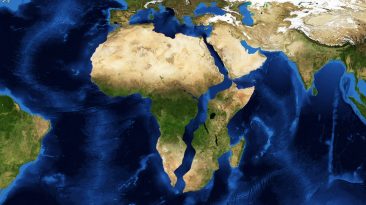Bursts of solar flares from the Sun’s surface look spectacular, but they can pose a danger to us here on Earth. If one was to hit us hard enough, it would knock our entire planet into darkness.
Wait, what? How can the Sun do that to us from a distance of 150 million km away? What does it have to do with frying up our satellites?
And what can you if that happened tomorrow? It wouldn’t be the solar flares that sent us back into the pre-technological era. It’d be the giant clouds of hot plasma and electromagnetic radiation that the Sun spews out.
This is a phenomenon known as coronal mass ejection, or CME. In 2012, a powerful CME shot through the Earth’s orbit. Luckily, our planet was in another part of our orbit at the time and we missed a direct hit.
We weren’t so lucky back in 1859, when the electromagnetic radiation of another CME just as powerful, set telegraph pylons on fire and shocked operators through the telegraph lines.
The telegraph. That’s really all there was for technology at the time. But now? Our entire planet is deeply reliant on electricity and electronics. If a solar storm that strong were to strike today, we’d be in a much worse situation. How bad would it be?
It would start with an enormous explosion on the Sun’s surface. Then, the solar flare would zap the Earth’s upper atmosphere with a giant electromagnetic pulse.
This would block radio signals between the Earth and our orbiting satellites, but wouldn’t damage them just yet. Not until minutes to hours later, when a stream of charged particles started bombarding the Earth’s magnetosphere.
These particles would hit some of the satellites and damage their electronics. Our communication systems would begin failing.
[dx_custom_adunit desktop_id=”RTK_CDE4″ mobile_id=”RTK_SUFd”]But the worst is yet to come. After anywhere from 12 hours to several days, a cloud of plasma would finally reach the Earth. First, it would hit NASA’s ACE satellite, designed to warn us about the upcoming storm.
Even with that warning, we’d only have about 30 minutes before that space cloud rained down on our magnetosphere and triggered a geomagnetic storm here on Earth. Hopefully, you’re not on an airplane at the time, because its GPS system would fail, and your pilot would have to start navigating without it.
On Earth, the geomagnetic storm would start to melt our power grid transformers. Do you know what that means? A global power outage. Not a fun part for all the power-hungry humans out there.
All the lights would go out. You wouldn’t be able to charge your phone or your laptop. Your fridge would stop refrigerating, and your heater would stop heating you up.
Make sure you have some spare cash because all the ATMs would be useless, just like your credit cards. Most likely, you wouldn’t even be able to flush your toilet, since in most modern cities water supply is controlled electronically.
You wouldn’t be able to get in touch with your family or friends through your phone. So make sure to have a plan B meeting spot for a case like this.
It wouldn’t be just a world-wide power outage. We’d lose all the information stored on our electronics, too. All those photo memories you always wanted to print out but never did would cease to exist.
Anything and everything relying on the internet would shut down. No banking services, no internet access in the transportation system, no social media to vent your frustration in.
The National Academies report estimates over $2 trillion in losses from a solar storm the size of the one that sparked the telegraphs in 1859. But is there anything we can do to prevent it?
Well, we can’t control the space weather. If the Sun were to send us a direct hit, this hypothetical scenario would get real. Almost real.
NASA and The Space Weather Prediction Center keep monitoring the activity of our Sun. Their 3-day forecast would give us a heads up if our star looked suspicious. We might have time to disconnect transformers and switch the satellites into a safe mode. But you better pack up an emergency kit with food and money, just in case.
Maybe one day we’ll build a protective shield around the Earth to prevent something like this from affecting us.
Subscribe to What-If on Youtube or follow the show on Facebook Watch.
Sources
- “Geomagnetic Storm” oecd.org. Accessed January 25 2019.
- “Severe Space Weather Events–Understanding Societal And Economic Impacts”. 2008. National Academies Press. doi:10.17226/12507.
- “What Damage Could Be Caused By A Massive Solar Storm?”. @JosephStromberg, Follow. 2013. Smithsonian. Accessed January 25 2019.
- “Near Miss: The Solar Superstorm Of July 2012 | Science Mission Directorate”. 2019. science.nasa.gov. Accessed January 25 2019.



























